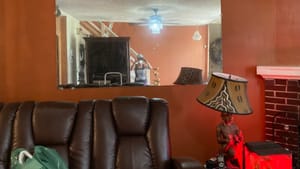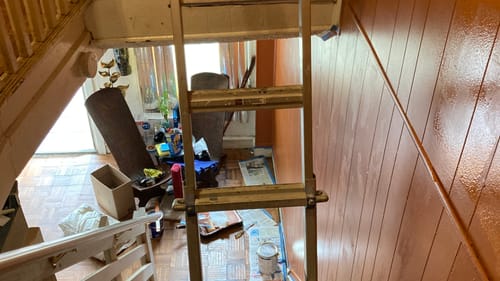Stay in the Loop
BSR publishes on a weekly schedule, with an email newsletter every Wednesday and Thursday morning. There’s no paywall, and subscribing is always free.
The tools of tikkun olam
Repairing the world takes all kinds of builders, including the ones with words

At 16, I wanted to wield a hammer, not a pen.
My high-school sweetheart had spent a summer rehabbing houses in Lincoln, Nebraska, living in a frat house dubbed “Sammy” (Sigma Alpha Mu) and snickering about the unicameral state legislative tower that locals wryly call “The Penis on the Prairie.”
To a myopic, last-picked-for-the-softball-team, type-A bookworm like me, my boyfriend’s summer experience sounded visceral and real. I’d been reading Zen and the Art of Motorcycle Maintenance and way too much J.D. Salinger. I longed to do Something Significant.
But when I was waitlisted, then admitted, to a creative writing program at the Pennsylvania Governor’s School for the Arts, the forces of habit (and my mother’s worried persuasion) won the day.
I packed my summer suitcase with notebooks instead of work gloves and headed off to Bucknell University, where I wrote bad poetry and middling short stories, became a vegetarian, and encountered, for the first time, the syntax-bending work of e.e. cummings.
I never forgot about the hammer, though—about that yearning to push my body along with my brain, to make a useful, three-dimensional thing, to take part in the communal effort I would later come to know as tikkun olam, repair of the world.
It took 42 years to turn that impulse into action.
Between the lines at home
On an overcast August Tuesday, I reported to the parking lot of the Second Baptist Church of Germantown along with other volunteers—10 men and a woman, that morning—who’d signed up for work stints with the Urban Resources Development Corporation, an organization operated by 12 northwest Philly congregations and devoted to rehabbing the houses of elderly Germantown homeowners with low incomes.
First, there were glazed doughnuts. An invocation for the work day. Then a description of our tasks in three different houses: demo and installation of a new kitchen floor; construction of a banister on the open staircase. Grounding an electrical outlet. Installing drywall. Caulking a tub. Repainting two living-room walls.
My team’s destination: a house midway down a snug block of row homes with tidy cement porches. The owner had just come back from walking her dog.
While I waited for someone to show up with spackle and a tray, I looked around: a small place that seemed haphazardly—even dangerously—crammed with 40 years of living: plastic tubs of cold cereal next to heaps of newspaper near a box of votive candles. Bills and receipts, pistachio shells and paper clips, African carvings and brittle Christmas tinsel.
I tried to read between the lines: a cherry-colored sharps container for the needles the owner uses to check her blood sugar. Sacks of lentils and split peas: the pantry of someone who cooks from scratch. An 8x10 glossy from a graduation. A book of devotional readings by the toilet. A Kamala Harris face mask.
Messy bias
It’s easy to forget that any moment is merely a snapshot, that first impressions never yield the backstory. Old people were once young. Frail ones used to be vigorous. A woman who shuffles around in a pair of fuzzy mules once eased her elegant feet into those glam suede boots on the upstairs rack.
You could look at this house—the mess; the dog howling in his crate; the vertiginous, open stairwell a cracked hip waiting to happen—and discern a tale of brokenness. Even in our group of do-gooders, one man referred in exasperation to “hoarders” and “decrepit” owners incapable of caring for their homes.

There’s truth to that, but there’s also bias in the lens: I squirrel away the condiment containers that come with Chinese takeout and refuse to part with daily planners dating back to 1986, but no one accuses me of hoarding. My partner and I lived for 17 years with a mottled, bulging bedroom ceiling because we just didn’t prioritize fixing it.
On my second day of volunteering, I clambered gamely onto an extension ladder that had two feet planted on the stairs and the top end braced against a wall. I rolled paint until my left arm burned. I stood on tippy-toes to reach the corners.
While the first coat dried, I asked questions. The owner told me about her kidney transplant, about the persistent robocalls offering free cruises or promising a $100 gift card if she’ll just recite her bank account number. She told me about the mewling kitten she’d rescued from the street, about the son who was killed, about the friend who died of Covid and the one who still has symptoms.
Where we write healing
At 16, I chose a life of words. My toolbox holds metaphors and rhythms, syntax and sensory details. Sometimes those feel like feeble instruments compared to the work one can do with a hammer and a pouch of nails.
But here’s what I keep learning. Any tool—a word, an awl—is capable of building up or tearing down. When you try to change the world, the world rehabs you, too. Doing Something Significant often means doing something small.
The house we healed—tikkun olam—is just one node in a sprawling, complicated tale with ancient themes of poverty, aspiration, indifference, and greed, a tangled story that we tell together, ad infinitum (we hope), and whose ending is not written in the stars.
Rather, it’s written by our hands.
There’s a house in East Germantown whose owner is now less likely to tumble down her staircase because she has a banister to grab. Which means she can lift her gaze to a wall painted the color she chose, a rich shade of roasted pumpkin—that wall, the one behind the couch where she sits to open mail and check her blood sugar and crack pistachios one after another, savoring the salt-sweet nut inside.
This story and these photos are shared with the homeowner's permission.
Sign up for our newsletter
All of the week's new articles, all in one place. Sign up for the free weekly BSR newsletters, and don't miss a conversation.

 Anndee Hochman
Anndee Hochman